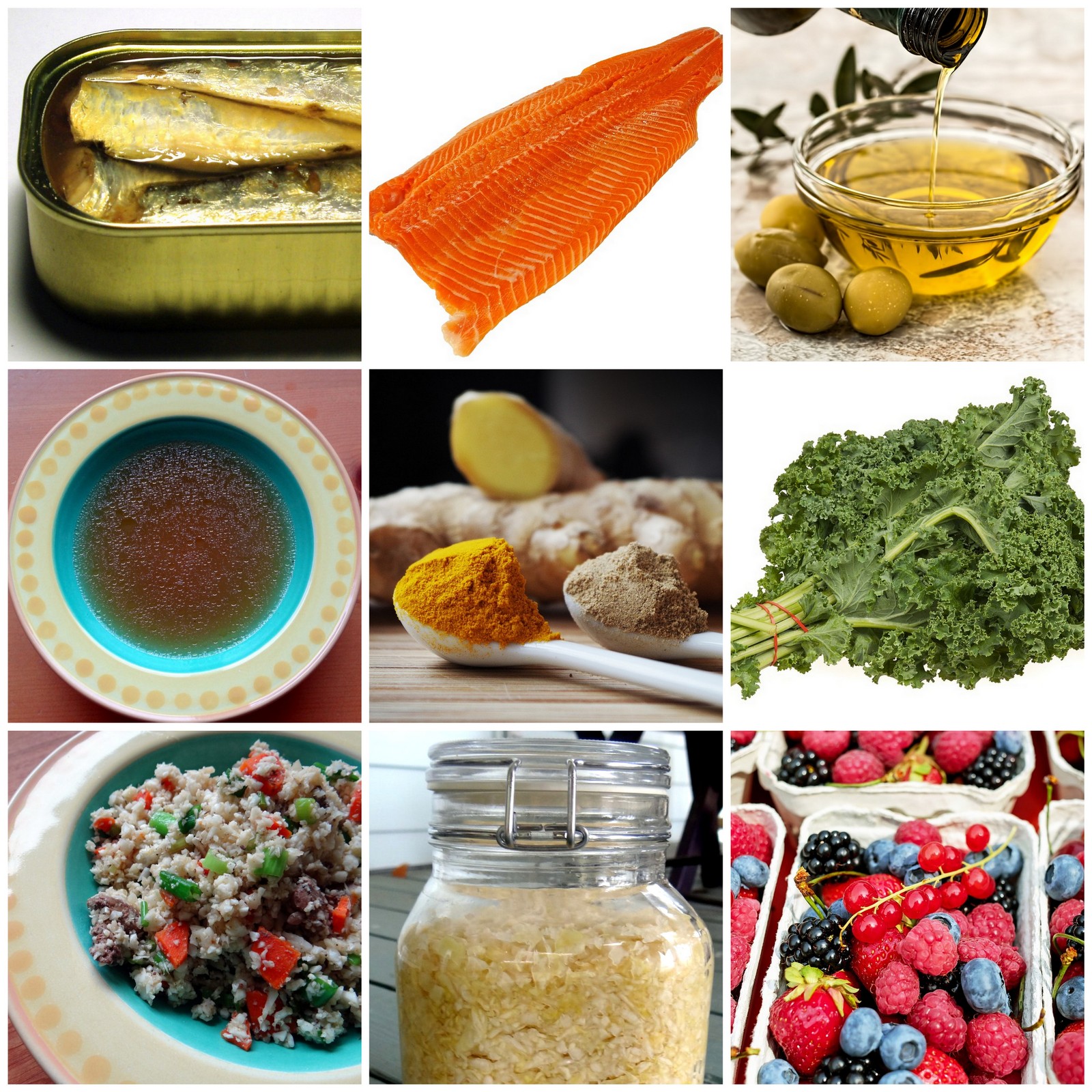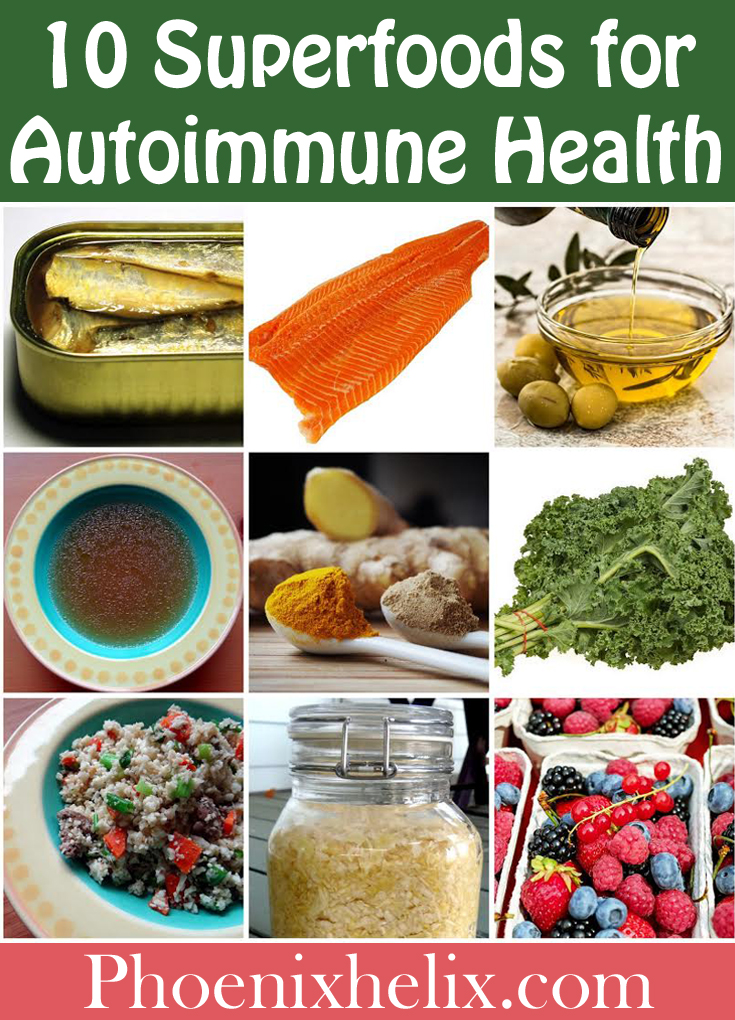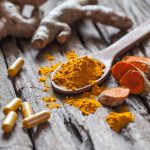
“We’ve been obsessed with calories for so long that we’ve forgotten what’s supposed to come with our calories: nutrients.”
~ Liz Wolfe
Becoming a Nutrient Seeker
Giving up processed foods and following a real-food diet goes a long way to feeding our bodies for health. But we can do even more! When we choose foods that are nutrient-dense, anti-inflammatory, detoxifying, immune system regulating, and supportive of digestion at the same time, we are truly embracing food as medicine. Thankfully, when it comes to food, there are many excellent choices. Here are some of my favorites. How many of these do you eat?
1. Sardines
People seem to fall into two camps: sardine lovers or sardine haters. If you’re in the second group, let me persuade you to reconsider. A key tenet of the paleo diet is shifting the fatty acid balance in our bodies toward health. That means eating more omega-3 fatty acids (which reduce inflammation) and less omega-6 fatty acids (which increase inflammation). Inflammation is a root cause of all chronic disease. One can of sardines provides 2200 mg of Omega-3’s. Not only that, sardines are also rich in selenium, vitamin D, and vitamin B12. Selenium is essential to our body’s ability to detoxify. Vitamin D is an immune system regulator, and Vitamin D deficiency has been correlated with autoimmune disease. Vitamin B12 is necessary to DNA synthesis. That means it’s vital to every cellular process in our bodies. In fact, a B12 deficiency can actually mimic multiple sclerosis. Lastly, sardines are also rich in calcium, an important mineral that can be hard to find on a dairy-free diet. (Favorite brand: Wild Planet. Recipe: Superfood Sardine Salad.)
2. Wild-Caught Salmon
Salmon is also packed with omega-3 fatty acids, selenium and B12. But it also offers a unique benefit: a special protein peptide that has been shown to support joint health and control inflammation in the digestive tract. There has even been a clinical trial showing improvement in ulcerative colitis symptoms with the addition of 1.3 pounds of salmon to the patients’ weekly diet. Avoid farmed salmon, however, which are usually fed hormones, antibiotics and GMO grains. (Recipes: Salmon Primavera and Grilled Salmon with Strawberry Ginger Salsa.)
3. Extra-Virgin Olive Oil
People in the Mediterranean often live long, healthy lives, and this oil is one of the reasons why. Rich in polyphenols, these compounds have extraordinary antioxidant and anti-inflammatory benefits. In fact, one of the ways they decrease inflammation is by influencing the TNF-Alpha pathway, the same one targeted by many biologic drugs prescribed to control autoimmune disease. One warning: When demand for extra-virgin olive oil went up, fraud became rampant. There is no regulation on olive oil, so lower grades are sometimes labeled as extra-virgin, or adulterated with different oils altogether. Here are some shopping tips: Look for dark, glass bottles that have a harvest date for the olives (not an expiration date). You want to consume olive oil within two years of harvest, and it’s not unusual for oils to be sold well beyond that. Next, do a taste test: swirl a small amount around in your mouth. You should be able to taste the olives, and there might be some bitterness or pepperiness at the back of your throat. What you shouldn’t taste is anything greasy, moldy, rancid or reminiscent of cardboard. It also shouldn’t be a neutral tasting oil. Real extra virgin olive oil has layers upon layers of flavor. (Favorite brand: Any oil approved by the The California Olive Oil Council.)
4. Bone Broth
You won’t be paleo for long before hearing of the wonders of bone broth, and this elixir is now going mainstream. Bone broth bars are popping up in major cities, and celebrities are posting photos on Instagram, showing them sipping a morning cup of bone broth in place of their usual coffee. It’s a smart switch! So, what it is it, and what makes it so special? Made from slowly simmering a variety of bones, this broth becomes filled with bone marrow, collagen, gelatin, glycine, proline, hyaluronic acid, chondroitin sulfate, calcium, phosphorus, magnesium, and potassium. If those words sound familiar, just step into the vitamin section of your local health food store and you’ll see them on the sides of bottles. Bone broth is a food that acts like a supplement, helping to maintain healthy bones, glowing skin, pain-free joints, and supporting the cellular processes that happen throughout our bodies every second of every day. What is more foundational than that? In particular, bone broth is an ideal food for the cells that line our gut. Research has shown that leaky gut is one of the causes of autoimmune disease. Anything we do to heal our gut lining calms down our overactive immune system at the same time. (Favorite brand: Bonafide Provisions. Recipes: Instant Pot Bone Broth and 24-Hour Bone Broth.)
5. Sauerkraut
People have been making sauerkraut for 2,000 years. This is a good tradition to join. Fermented foods like sauerkraut are highly recommended on any healing diet, because they contain a natural diversity of probiotics. Dr. Sarah Ballantyne discusses their benefits in her book, The Paleo Approach. When you buy probiotics in a bottle, you’ll get anywhere from 1 to 20 strains. Sauerkraut contains over 600 strains. How do these probiotics benefit us? They reduce inflammation, help modulate the immune system, tighten cell junctions in our intestines, and shift our gut bacteria in a healthier direction. Fermentation also increases both the amount and bioavailability of nutrients, so sauerkraut is exceptionally high in vitamins A, C, and K. Lastly, fermented foods stimulate our digestive enzymes into action. They’re great to have before or alongside a meal. You’ve heard the phrase: “We are what we eat”. Actually, we’re what we eat, digest and absorb. (Favorite brand: Farmhouse Culture. Recipe: No-Fail No-Pound Sauerkraut).
6. Turmeric
Turmeric contains a medicinal compound called curcumin, that is one of the most well-studied herbs in the scientific literature. It has been shown to reduce inflammation, relieve pain, support detoxification, reduce cancer risk, improve brain function, balance blood sugar…the list goes on. There have even been studies showing that it lessens the symptoms of autoimmune disease and can potentially slow down disease progression. However, every study has been done on the supplement curcumin. What about turmeric – the food from which the supplement is made? The problem is that curcumin isn’t very bioavailable. That means that our bodies have a difficult time absorbing it, which is why supplements have been patented with special ingredients that make it bioavailable. So, what can we do to increase its medicinal properties when we use turmeric in cooking? (1) Always eat it with fat – curcumin is fat soluble, not water soluble. (2) Heat the fat. One study showed this increased its bioavailability 12-fold. (3) Add black pepper. There’s a reason traditional recipes combine the two. One study showed it increased absorption by 2000%. Note: black pepper isn’t AIP, but it’s one of the first foods you can try when you’re ready for reintroductions. (4) Ferment it. Fermented foods are magical for many reasons, one of which is their ability to increase the digestibility of foods. So, if you make your own sauerkraut or kombucha, add some grated turmeric to your next batch. Warning: Turmeric is bright yellow, and it stains anything it touches. Wear an apron when you cook with it! (Recipes: Paleo AIP Anti-Inflammatory Turmeric Recipe Roundup).
7. Kale
Terry Wahls says, “When in doubt, choose kale.” Why is this her favorite vegetable? Because it fills two of the three vegetable categories she recommends we eat every day: greens and sulfur-rich vegetables. Greens are known to be rich in natural folate, a B vitamin that is essential to cellular health bodywide. In fact, it’s so essential that many of the packaged foods we grew up eating are fortified with its synthetic counterpart: folic acid. The problem is that many people have trouble breaking down folic acid, and it can build up in our bodies and cause other health problems, including cancer. Folate from greens like kale provides the nutrient in a form our bodies can access and use. Kale is also sulfur-rich. What does that mean? Sulfur is necessary for the production of collagen in our bodies – that means healthy joints, skin and connective tissue. It’s also essential to detoxification, stimulating production of glutathione – the master antioxidant. Low glutathione levels are also correlated with autoimmune disease. (Recipes: Kale with Garlic and Cranberries and One-Pot Herbed Balsamic Beef and Kale.)
8. Ginger
Like turmeric, ginger is another powerful rhizome that provides a wide array of health benefits. Unlike turmeric, it’s easily absorbed by the body. So, you can enjoy it any way you like. Minced and grated, it adds heat and flavor to any meal. One easy way to consume ginger is to make some ginger honey tea. Add 1 or 2 teaspoons minced or grated to a mug, pour boiling water on top, and let it steep for 5 minutes. Strain out the ginger, and add a little raw honey to taste. What are the health benefits? Ginger supports digestion, relieves nausea, reduces inflammation, acts as a potent antioxidant, and also relieves pain. There’s even a study showing its application as a pain reliever for people with rheumatoid arthritis. (Recipes: Ginger Scallion Sauce and Ginger Bug.)
9. Pastured Chicken Livers
No list of superfoods is complete without organ meat. While Terry Wahls is famous for her vegetable recommendations, she also recommends we eat 12 ounces of organ meat every week. Why? Because they are the definition of nutrient-density. If you look at the nutrient table in her book, The Wahls Protocol, liver tops the list for the following vitamins and minerals: A, B1, B2, B3, B5, B9 (folate), B12, iron, copper, zinc, and CoQ10. That’s quite a list! Let me draw your attention to a few of these. I mentioned earlier that vitamin D is an immune system regulator. Well, it doesn’t work alone – its partner is vitamin A. Together, they suppress Th17 cells that drive autoimmune disease. Also, the vitamin A found in chicken livers is in a form that your body can readily use. While carrots are famous for vitamin A content, they actually contain the precursor beta-carotene, which has to be converted by the body before its used. Unfortunately, only 3% gets converted in a healthy adult. Chicken liver is also rich in vitamin K2 – “activator x”. This vitamin is a synergist for many others in the body, helping them all do their jobs better. Some people are afraid to eat liver, because they think it stores toxins. This is a myth. The liver is a filter, not a sponge. It processes toxins out of the body, and contains important nutrients that our bodies need to be healthy. Choosing pastured chicken livers maximizes the nutrition. (Recipe: Chicken Liver Fried Rice.)
10. Berries
Now that you’ve eaten your liver, it’s time for a reward: berries! While these aren’t vegetables, they actual fill the third category of produce that Terry Wahls recommends: brightly colored. Those deep hues express a richness in flavonoids – powerful molecules with antioxidant and anti-inflammatory benefits. Berries actually contain more flavonoids than many vegetables. So, enjoy! The only ones to avoid are the goji berries and Cape gooseberries, which are also nightshades – a plant family that tends to increase inflammation in people with autoimmune disease. (Recipe: Berry Green Avocado Smoothie.)
You May Also Be Interested In
A version of this post originally appeared in my column in Paleo Magazine.
Image Credits: Some of the photos are from my own recipes (Bone Broth, Sauerkraut, and Chicken Liver Fried Rice.) The other images are public domain images found through Wikimedia Commons and Pixabay.










Great information! Love your scientific facts! Introduced on Andreas 15 min matrix show. Yours was my favorite so far.
Going to check out your books now
God bless you!
Mary
Hi Mary. Thanks so much for saying hello, and I love that you found me through 15 Minute Matrix!
Hi again Eileen,
I eat 2 or 3 servings of wild-caught fish each week, but my wife doesn’t seem to digest fish well at all – I was already a little worried about her Omega 3 intake, but now she’s pregnant, so it’s even more important. Do you have any suggestions for other ways to get good doses of DHA, or (maybe even better) how to improve digestion of fish?
Thank you!
Paul
Hi Paul. That’s unusual. The protein in fish is considered the easiest-to-digest protein. Is it possible she’s allergic to seafood? Or simply has a strong taste aversion? If it’s a taste aversion, that can be changed (I’m proof of that), but not necessarily during pregnancy where taste aversions often become stronger. She can try digestive enzymes, to see if that helps. Or consider a high-quality supplement like Nordic Naturals during pregnancy. Congratulations to you both on your growing family!
I have been following your blog for quite a while now. Thank you for what you’re doing here!
Thanks, Iurie!
I have been following the AIP diet for almost a month eating loads of leafy green vegetables including spinach I am now discovering that spinach is high in oxalates which can be bad for RA
any comments??
Hi Ros. If you dig into healing diets, you’ll find fear surrounding lots of different foods. For most people, oxalates aren’t a problem. However, 3-4 cups of leafy green vegetables is a good maximum per day. If you’re juicing and eating more than that, cut back. I have no trouble with oxalates at all. If you’ve only been following the AIP for one month, It’s too soon for you to start varying the AIP template. You can troubleshoot down the road if you’re not seeing results, but be very cautious about removing more and more food groups. That leads to both nutrient deficiency and an unhealthy fear of food. This is a good article by The Paleo Mom: https://www.thepaleomom.com/oxalate-sensitivity-real/.
thank you, Eileen,
I appreciate your advice and will continue to stick with AIP. I probably do need to cut back on green leafy veggies.
Thanks for sharing. The onset (and first 6 months) of my RA was so very similat to yours. But didn’t hit me until 6 months ago at age 66.
Your testimony gives me much hope
thanks again!
GREAT article! Unfortunately, I have advanced adrenal fatigue in addition to autoimmune disease. When I collapsed from adrenal fatigue, it created histamine intolerance and I haven’t been able to consume fish (or fish oil) in 2 years!! I’m hoping to recover soon and add more of there “superfoods” back in my diet!!
Casey
Wishing you histamine healing, Casey!